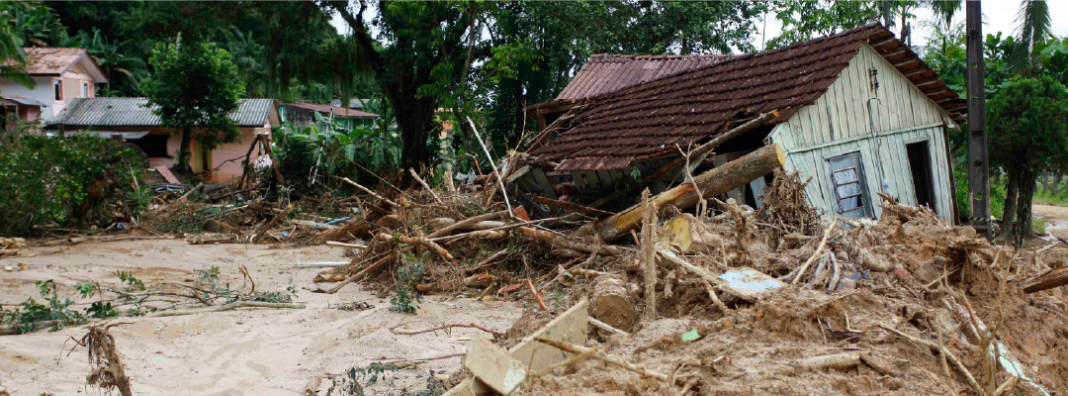
Francis Perez is thinking about coming to America. In the last three years, his family’s coffee farm in Honduras has suffered hurricanes, flooding, and drought.
“I feel that I’m stuck. I don’t feel that I can build the future I want here,” Francis told NPR.
Francis’s thoughts are shared by many in the world. Climate change will leave more people vulnerable to natural disasters, droughts, extreme temperatures, and other disruptions to their way of life, motivating many to migrate north to cooler parts of the planet.
How will leaders respond to this migration? Many politicians and public officials frame climate migration as one simple story: a threat to national security.
Migration is a much more complex issue. But even if it was limited to that one simple story, the problem is that a national security issue points to national solutions, administered through centralized, hierarchical, militarized organizations like the Department of Defense and the Department of Homeland Security.
But many challenges associated with migration are not national in scale. Leaving decisions in the hands of the national government means that decision-makers will lack local, context-specific knowledge. Moreover, power will be concentrated, creating perverse incentives that enable abuse and opportunism.
That’s why it’s often better to use a polycentric approach, meaning one that employs multiple decision-making bodies that operate independently of each other. This is the argument we make in our new study published by the Center for Growth and Opportunity at Utah State University.
In a polycentric system, questions about where migrants work can be decided through negotiations between employers, migrants, and sometimes intermediaries such as job boards, hiring agencies, or unions. In contrast, federal policies restrict these agreements, impeding mutually beneficial exchange.
In a polycentric system, questions about how to integrate immigrants into their new communities can be addressed at the community level. Sometimes this will be done by civil society groups like churches or non-profits, by neighbors helping each other informally, or by local governments. Unfortunately, the national government often uses force to crack down on these bottom-up community efforts.
These crackdowns are often carried out in the name of security. But even when it comes to security, a polycentric approach is still preferable because it allows local officials to choose policies that fit their community’s public safety needs. Put yourself in a migrant’s shoes: would you feel comfortable reporting crimes to the police if you feared that they would hand you over to ICE? Polycentricity allows local communities to adopt policies that build trust with migrants, which allows everyone in a community to cooperate to create public safety.
No matter how thoughtful a president, senator, general, or Secretary of Homeland Security is, they will never know the local circumstances of time and place in each community.
To adapt to climate migration, or any other big change, a one-size-fits all solution is not enough. What we need is a diverse tapestry of organizations and individuals that work together to use their local knowledge and discover adaptations that work well for those most vulnerable.
Conflicts and problems will still arise. There are no panaceas. But allowing institutional diversity enables us to fit the scale of the solution to the scale of the problem.
So when we think about climate migration, we should remember that it’s a multifaceted issue that goes far beyond national security. And multifaceted issues can’t be solved by one central plan. They require cooperation, experimentation, and creativity.
To unleash that kind of creativity, we need policies that allow individuals to have the freedom to experiment and cooperate with each other. Unfortunately, today’s immigration system is too complex and inflexible for such experimentation. Recent research by David Bier of the Cato Institute finds that “fewer than 1 percent of people who want to move permanently to the United States can do so legally.”
A simple starting point to enable greater freedom and flexibility is increasing the number of immigrant work visas. Wider legal channels encourage legal and manageable immigration flows. In addition, capitalizing on the recent success of private refugee sponsorship allows individuals and civil society groups to use their local knowledge to help migrants join their communities.
We’ll find the right responses to climate migrants like Francis if we create opportunities for responses at every level instead of relying on a one-size-fits-all national response. Current immigration policies smother the bottom-up adjustments that can help us adapt to a changing climate. Lifting these restrictions would allow more people to use their local knowledge in ways that help us all better survive and thrive in a warming world.



 West Central Tribune
West Central Tribune Chronicle Tribune
Chronicle Tribune